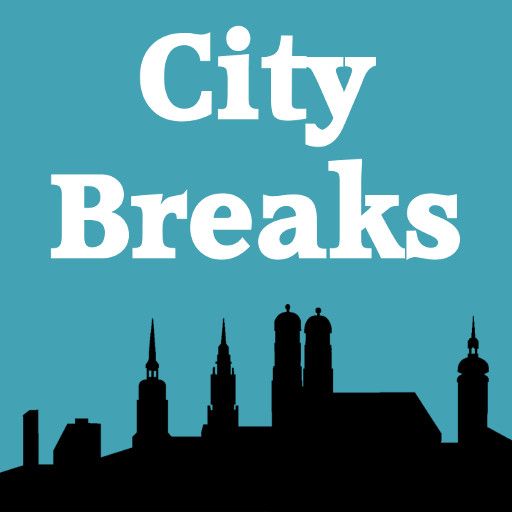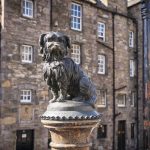Here are 5 suggestions for walks around Amsterdam. They include possible stopping places and between them they offer a way to see something of all of the main parts of the city. We give enough detail to follow the route if you take a map with you and a little info on the main places you’ll be passing, although we’ll be coming back to most of them in later episodes. None will take longer than an hour if you don’t stop anywhere, so you could do them all in a few days. Alternatively, do one – the first one, perhaps – as an introduction to Amsterdam, or try those which cover areas you might not otherwise visit.
As usual, there is much more detail on the podcast.
01 a loop south from centraal station

Start at Centraal Station, where you’ll surely want to photograph the stunning 400 metre long façade and perhaps pop into the Grand Café on the first floor (go up the stairs on the far right of the entrance hall, then find it immediately on your left. It’s a classy art nouveau number in what used to be the first-class waiting room. Then find Brouwersgracht, one of the city’s prettiest canals, just west of the station where you can admire 17th century houses from the Dutch Golden Age. Turn left into Keizersgracht, the middle of the city’s three main canals, built in the same era but much grander.


Keizersgracht is the widest canal in the city centre, lined with former warehouses and merchants’ mansions which are now mainly residential. Enjoy the canal-side views, do some gable-spotting along the tops of the houses and consider taking a little detour to the Westermarket where Anne Frank’s House is, before turning left along Radhuisstraat and navigating your way to Dam Square. At Anne Frank’s House you can visit the secret annexe where she and her family hid during the German occupation of the city from 1942-4, but this will almost certainly only be possible if you have booked well in advance.
Dam Square is the centre of the city, the site where it was founded in 1270 when a dam was built to create land for building. The Royal Palace – the Koninklijk Paleis – is at one end, built as the City Hall in the 17th century and converted into a palace by Louis Napoleon, King of Holland – appointed by his brother! – for a few years from 1806. It belongs to the state now and is open to visitors unless being used for official receptions or other royal events. Look out too for the Nieuwe Kerk, the church where new monarchs are inaugurated and for the National War Memorial.
Dam Square is always lively thanks to street entertainers, demonstrations and protests. Madame Tussauds is there, plus a good range of shops and restaurants, including the poshest department store in the Netherlands, Bijenkorf. Note that there’s a not-too-expensive self-service restaurant up on the top floor with a good range of food and some excellent window seats overlooking the square. Find your way back to the station via Warmoestraat which will take you through the oldest part of the city, lively and safe during the day, but – ahem – somewhat racier in the evenings.
02 a walk from the flower market


Start at the Flower Market, here since 1860, with its picturesque mix of stalls selling a multitude of flowers and bulbs, mixed in with souvenir shops selling wooden tulips and clogs and lots of cheese. Then go up the Herengracht, once home to the city’s richest merchants and still a prestigious address, perhaps stopping off at the Canal Museum at no 386 where a short but fascinating multimedia presentation will explain all things canal to you, from how they were built against the odds to what’s inside those pretty canal-side houses. A left into Wolvenstraat will take you to the 9 Streets area where there are plenty of boutiques, vintage shops and places selling edible treats such as stroopwafel.

Then, find your way to the Prinsengracht and turn left to make your way back to the flower market, perhaps stopping off at the Houseboat Museum, sited opposite no 296. You can look round the living quarters and learn the history of the Hendrika Maria, built in 1914 and since then variously used to transport goods, as an artist’s studio and then a houseboat. You will find the answers to such questions as ‘is it very cramped inside?’ and ‘where was the captain’s bunk?’ and leave wondering why the whole of the interior is decked out in 1970s style – groovy wallpaper, an orange television and so on. Admire the pretty top deck garden as you depart.
As you near the Flower Market, you could take a little detour south to Leidesplein, a lively square known for its theatres – including the beautiful Stadsschouwburg, or National Theatre – and its nightlife, based around pubs, restaurants and clubs, not to mention jugglers and fire-eaters.
03 from rembrandtsplein to the albert cuyp market


Rembrandtsplein was once the medieval gateway to the city and in the 17th century it was the Botermarkt (Butter Market). Today it is dominated by a large statue of Rembrandt and surrounded by pubs and restaurants. Find your way to the top of the Reguliersgracht just south-east of the square and follow it right down to the end. It’s a scenic route, crossing all three main canals. The bridge on the corner with Herengracht is known as the Brug van 15 bruggen, because from it you can see 15 bridges, as long as you include the one you are standing on! It’s also known as the most romantic spot in Amsterdam.


From the end of Reguliersgracht, it’s a short hop across the main road – Stadhouderskade – to the market running the length of Albert Cuyp Street. Admire the street art depiction of Rembrandt at the top end (Van Woustraat) then wander the 260 stands of Amsterdam’s most popular street market. You’ll find all manner of offerings, from the expected fruit, veg, cheese and spices, to the quirky: liquorice in a squillion flavours, bolts of fabric with a canal house print, cannabis lollies, cheap football shirts named for the Dutch national team. The atmosphere, like the takeaway options, is cosmopolitan. Retrace your route to return or go a little east and follow the Amstel north back to Rembrandtsplein.
04 around the museum quarter

Devise a circular route starting at the Rijksmuseum which takes in the city’s big 4 art galleries, the national concert hall and the Vondelpark and you’ve seen the best of Amsterdam culture and its most beautiful park. The Rijksmuseum was designed the the same architect as the Centraal Station and its turrets and carved stone decorations are just as stunning. Inside, the Gallery of Honour is the spot to aim for, firstly to see the stained-glass depictions of famous Dutch artists and merchants in the hallway and then to search out the big-hitter works from the Golden Age – Vermeer’s The Milkmaid, for instance and – of course – Rembrandt’s Night Watch.

Clustered together just to the south are the Van Gogh Museum – the world’s largest collection on his life and work – the Stedelik Museum housing works from 1870 onwards and the MOCO – Museum of Modern and Contemporary Art – where you can see street art and digital art by, for instance, Banksy, Damien Hirtst and Andy Warhol. En route to the nearby Vondelpark you’ll pass the Concertgebouw, the National Concert Hall, where regular events include major evening concerts, Saturday matinees and Wednesday lunchtime events.
The 47 hectares of the Vondelpark form the city’s green lung and offer lawns, a rose garden, statues, bike paths, a children’s playground and a choice of restaurants. Look out for a statue of Joost van den Vondel, a poet and playwright who was a contemporary of Rembrandt and Shakespeare and for other artworks such as the abstract ‘Fish’ donated by Picasso to mark the park’s centenary in 1965. There are often free events, both musical and theatrical in the Openluchttheather (open air theatre).
05 REmbrandt’s House and The jewish quarter


Start at the Waterlooplein where you’ll find the oldest flea market in the Netherlands – 300 stalls of vintage fashion, second-hand books and antiques, plus loads of food trucks offering all kinds of cuisines – open every day but Sunday. Wander past the Rembrandt House at 4, Jodenbreestraat to see where he lived and worked for 20 years in the mid-17th century. Just opposite is the Sluyswacht Café, a former lock-keeper’s house which makes a great riverside stop. 5 minutes’ walk from the eastern end of Jodenbreestraat you are in the middle of the Jewish quarter, much of which was destroyed in World War II, but where you can still find the Jewish Museum and the Portuguese Synagogue.


The Jewish Museum tells the story of Amsterdam’s Jews, their history, religion and culture. Nearby, the Portuguese Synagogue makes a spectacular visit. It was built in the 1670s as Jews fled from Portugal to Amsterdam and its magnificent interior has little changed since then. The wooden pews sit under a vaulted timber ceiling, overlooked by the side galleries where the women gather to worship. Look out for the massive Torah ark and the chandeliers in which hundreds of candles provide the only light for evening services. A little further east is the National Holocaust Museum, first opened in 2024.
Here too are 2 popular outdoor attractions, the Botanical Gardens and Amsterdam Zoo. The former, the Hortus Botanicus, or Hortus for short, was founded in 1638, one of the first botanical gardens in Europe. The Zoo, known as Artis, is also one of the world’s oldest, opened in 1838. If you don’t want to walk back to the centre, you can catch a bus on the corner of Plantage Middenlaan and Plantage Kerklaan.
other ways to see the city
You can buy a 24 or 48-hour ticket for the two routes of the City Sightseeing Amsterdam Hop on Hop off tours, which begin and end at the Centraal Station. Boat trips around the city such as this one also leave from opposite the station.
Listen to the podcast
reading suggestion
The Invention of Amsterdam A History of the World’s Greatest City in 10 Walks by Ben Coates
links for this post
Grand Café restaurant 1e Klas
Anne Frank House
Royal Palace
Nieuwe Kerk
The Canal Museum
The Houseboat Museum
Albert Cuyp Market
The Rijksmuseum
The Van Gogh Museum
The Stedelik Museum
MOCO
Rembrandt House
The Jewish Museum
The Portugese Synagogue
Hop on Hop off bus tours
Boat trips
Previous Episode Introduction to Amsterdam
Next Episode The Canals of Amsterdam
Last Updated on March 26, 2025 by Marian Jones





